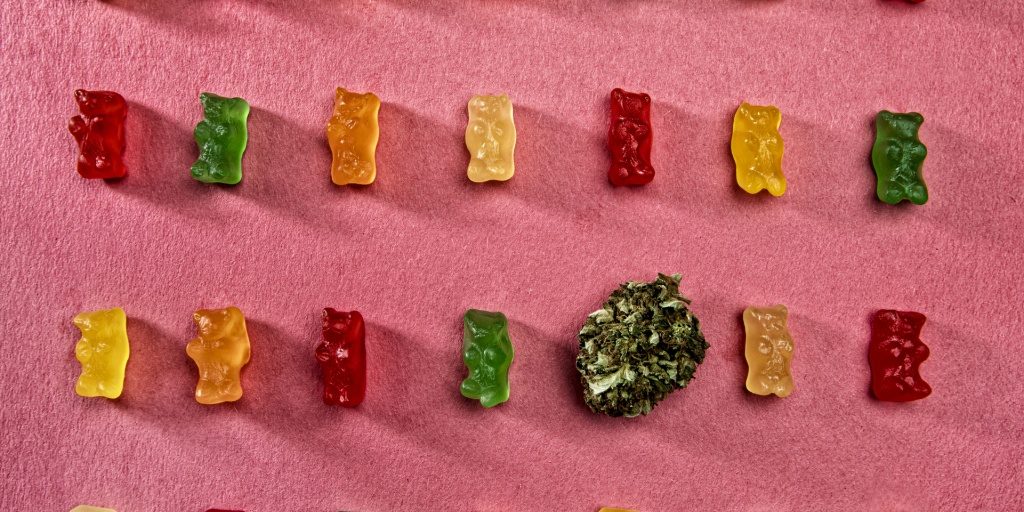Q: How dangerous are cannabis edibles for children?
A: That is a very good question and with Halloween around the corner it is more critical than ever to treat edible cannabis products like any other medicine and make sure it is locked up and away from kids.
Today cannabis products have THC levels that are much higher than they were 20 years ago, rising from on average 4% in the 90’s to over 12% and in some plants today there are THC levels reported as high as 30%. This contributes to making cannabis plants and their products today much more intoxicating, which can lead to unintended overdose, even in adults.
Additionally, oral formulations in edible products are digested like all medications, which are broken down in the liver and undergo something called first pass metabolism, where THC is broken down into a chemical metabolite called, 11-hydroxy-THC, which actually more readily crosses into the brain and is more potent with longer lasting psychoactive effects.
Edible cannabis has a delayed onset of action of an hour or more. This can lead to unintentional overdosage even in adults. Often, they do not wait long enough to judge the effects of their first dose and then ingest a second or third dose, thinking the first dose is not working. But still, children are the most at risk for unintentional overdose. A recent study in Colorado found an approximately 30% increase in unintentional overdose and exposure in their pediatric population after the legalization of recreational adult-use cannabis.
The reasons for pediatric unintentional overdose are two-fold. First, it’s obvious, many edibles look like delicious cookies and candies. That is why it is imperative that any cannabis, especially edibles be locked up and away from prying eyes and little hands just as alcohol, prescription medications and even household cleaning products and chemicals should be. In fact, many states do have legislation specifically addressing edible products, that dictate packaging, labeling and the appearance of the products.
In Maryland, a medical cannabis state where I practice, the packaging of a finished product must be an opaque plain package that is both tamper-evident and child-resistant with lot numbers and expiration dates. It needs to have warning labels stating that it is only intended for qualifying patients and to keep out of reach of children. There must also be an emergency phone number for the Maryland Poison Control center on it. And as far as the appearance of solid edible products, they can be made in geometric shapes but not in the shape of humans, fruits, animals, or anything that might appeal to children or minors.
The second main reason children are at risk for unintentional overdose is because of their size and weight. Even a relatively small or “normal” dose for an adult is potentially an overdose for a child. And while cannabis exposure and overdose are nowhere near as dangerous as an opioid overdose, it still must be taken very seriously. Unlike a fatal opioid overdose that overwhelms the receptors in the brainstem in an area called the Pre-Botzinger complex which causes the person to stop breathing, there are not many central CB1 receptors in this area that affect breathing. Therefore, fatal overdoses like opioid overdoses are practically non-existent.
I say “practically” because older research did demonstrate a lethal median dose called the LD-50 for cannabis. This is a measure of acute toxicity, meaning it is a measure of the short-term poisoning potential of a drug. Literally, it is the amount of a drug that, when given at one time, is found to kill 50% of the animals it is tested on. In fact, this is a measure of safety that is calculated and tested by pharmaceutical companies when they develop new drugs. And for cannabis oral preparations, the LD-50 is a massive dose that really would not be realistic in humans, ranging from 800-1270mg/kg to achieve lethality. Therefore, a 30-pound child would have to consume roughly, 10,888-17,284mg which would be over 10-17grams of cannabis.
Nevertheless, children can get very sedated and obtunded, to the point that they might not be able to protect their airways causing them to possibly choke on their own oral fluids, and that is why many ER doctors often rush to intubate them with a breathing tube on a ventilator and then admit them to the ICU for observation and monitoring.
Therefore, if you live in an adult-use recreational state and you are planning to have an adult Halloween gathering this year with edible cannabis products, you need to be hypervigilant to ensure these products are kept away from any children. Just the way you would do at any party serving alcohol. This is because, although rare, there are occasional case reports of children accidentally ingesting edible cannabis and overdosing around Halloween.
Dr. Leigh Vinocur is a board-certified emergency physician who also has a cannabis consulting practice for patients and industry. She is a member of the Society of Cannabis Clinicians and a graduate of the inaugural class, with the first Master of Science in the country in Medical Cannabis Science and Therapeutics from the University of Maryland School of Pharmacy.
Originally published on greenstate.com, October 25, 2021.







